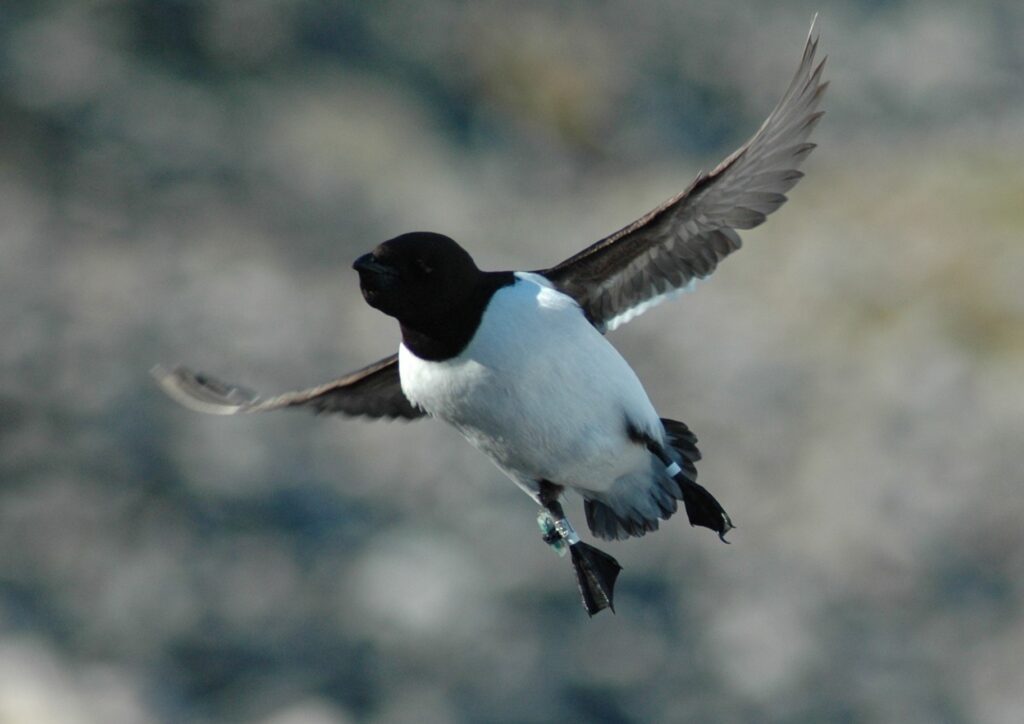Mercury contamination in individual seabirds varies with wintering area
In an extensive study based on data collected in the SEATRACK project, researchers have combined tracking data with measurements of environmental toxins in seabirds wintering in different parts of the North Atlantic Ocean. The study indicates certain links between wintering area and levels of mercury in the birds.
Study of six seabird species
Migrating seabirds are exposed to a variety of pollutants throughout the year. Mercury is of special concern due to its serious impact on animal health. Previous research has shown that winter is a critical season for seabirds since levels of mercury contamination can be higher then than at other times of the year. However, individual variation in migration strategy and winter distribution may result in different exposure to pollutants, both within and between species. In the study presented here, multi-year individual tracking data were combined with measurements of mercury in six Arctic seabird species. The objective was to investigate whether variation in individual winter contamination with mercury was related to seabird fidelity to a wintering site over years.
Variation between species and areas confirmed
First, the results showed that the proportion of individual birds with mercury concentration above the toxicity threshold varied between species (from 2% to 37%), with Brünnich’s guillemots having the largest proportion. Second, individuals with high fidelity to a wintering ground had less variation in mercury levels compared to those visiting different wintering areas. Furthermore, individuals that switched to a wintering ground northwest of the area they had previously wintered in had higher mercury levels than those moving in an easterly direction. The results confirm a spatial variation in mercury concentration in the North Atlantic Arctic, and an increase in concentration from east to west. More large-scale studies of ecotoxicology are needed to verify this trend.
Read the article:

Photo © Céline Albert

Photo © Céline Albert
Contact person: Sébastien Descamps, Norwegian Polar Institute